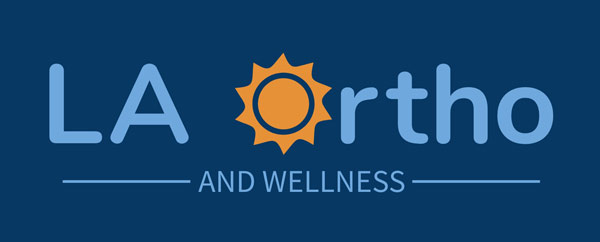Tennis elbow and golfer’s elbow, both forms of tendinopathy, cause pain and discomfort in the elbow and forearm. If you suffer from golfer’s elbow or tennis elbow in Burbank, contact Dr. Gelber for prompt diagnosis and treatment. Tennis elbow affects the outer side, while golfer’s elbow impacts the inner side, with symptoms like pain, weakness, and limited range of motion.
What are Tennis Elbow & Golfer’s Elbow?
Tennis elbow and golfer’s elbow are overuse injuries affecting the elbow joint. Tennis elbow (lateral epicondylitis) affects the outer side of the elbow, causing pain and tenderness. It’s often caused by repetitive gripping and wrist extension movements. In contrast, golfer’s elbow (medial epicondylitis) impacts the inner side of the elbow due to repetitive wrist flexion and gripping actions. Both conditions share symptoms like pain, weakness, and limited range of motion.

Common Symptoms of Tennis Elbow/Golfer's Elbow:
- Persistent pain on the outer (tennis elbow) or inner (golfer’s elbow) side of the elbow
- Gradual onset of discomfort that worsens with gripping, lifting, or twisting motions
- Weakness in the affected forearm and hand
- Stiffness and reduced range of motion in the elbow joint
- Pain radiating down the forearm, sometimes reaching the wrist
- Pain exacerbated by activities like gripping a racket or golf club
- Difficulty with everyday tasks such as lifting objects or even shaking hands
For less common symptoms for tennis elbow and golfer’s elbow in Burbank, contact our office today.
Potential Causes of Tennis Elbow/Golfer's Elbow:
- Frequent and forceful use of the forearm muscles during tennis or golf
- Incorrect form while performing repetitive actions
- Repetitive hand and wrist movements, like during carpentry or plumbing
- Aging tendons may become less flexible and more susceptible to injury
- Skipping warm-up exercises before physical activities
- Weak or imbalanced forearm muscles
Treatment Options for Tennis Elbow/Golfer's Elbow
If you suspect you have tennis elbow or golfer’s elbow, consult Dr. Gelber for proper evaluation. The diagnostic process typically involves a physical examination, where Dr. Gelber will assess your range of motion and pain triggers. In some cases, imaging tests like X-rays or MRI scans may be ordered to rule out other conditions, following which Dr. Gelber will curate a personalized treatment plan to restore mobility.
Regenerative Medicine
Regenerative medicine techniques like PRP and stem cell injections activate your body’s innate healing properties to stimulate tissue regeneration and reduce inflammation. PRP injections involve using your body’s concentrated platelets to stimulate tissue repair, while stem cell injections introduce specialized cells that promote natural healing. This is a very natural address to golfer’s elbow and tennis elbow in Burbank.

Functional & Integrative Medicine
Functional and integrative medicine approaches aim to address the root causes of your condition. Dr. Gelber may recommend physical therapy to improve muscle strength and flexibility, ergonomics assessments to modify your workplace or sports equipment, and lifestyle changes to reduce strain on the affected tendons.
Last Resort: Tenex Procedure
When conservative treatments fail to provide relief, tenex surgery may be considered as a last resort. It is a minimally invasive procedure that removes scar tissue from your tendon. It is an ultrasound-guided percutaneous needle tenotomy (PCNT) for treating tendinopathy. Tendinopathy is a kind of tendon degeneration, also sometimes called tendonosis or tendonitis.

Tennis/Golfers Elbow FAQs
How long does it take to recover from tennis elbow and golfer's elbow?
Recovery time for tennis elbow and golfer’s elbow varies. Mild cases may improve within a few weeks with rest and treatment, while more severe cases can take several months. It’s essential to follow your doctor’s recommendations and engage in proper rehabilitation exercises to ensure a full recovery.
Who is at risk of developing tennis elbow and golfer's elbow?
Individuals who engage in repetitive wrist and arm motions are at higher risk of developing tennis elbow and golfer’s elbow. This includes athletes, especially those who play racquet sports or golf, as well as workers whose jobs involve repetitive movements, such as painters, carpenters, and butchers.
How are tennis elbow and golfer's elbow diagnosed?
Tennis elbow and golfer’s elbow are diagnosed through a combination of medical history, physical examination, and imaging tests. Your doctor will assess pain and tenderness around the elbow, check for limited range of motion, and may order an X-ray or MRI to rule out other conditions and confirm the diagnosis.
Are there any complications associated with tennis elbow and golfer's elbow?
If left untreated, tennis elbow and golfer’s elbow can lead to chronic pain, reduced grip strength, and decreased range of motion. In severe cases, the condition can impact daily activities and quality of life. Early diagnosis and treatment are crucial to prevent complications.
When should I see a doctor for tennis elbow or golfer's elbow?
You should see a doctor if you experience persistent pain in your elbow that doesn’t improve with rest, ice, and over-the-counter pain relievers. Additionally, if the pain interferes with your daily activities, work, or sports, or if you notice swelling, redness, or difficulty moving your elbow, seek medical advice.

Consult Dr. Gelber Today
Dr. Jonathan Gelber, our board-certified orthopedic surgeon with fellowship training in sports medicine, is dedicated to returning you to an active lifestyle. He takes the time to thoroughly understand your condition and collaborates with you to develop a tailored treatment plan. Don’t limit your life and activities due to tennis elbow or golfer’s elbow in Burbank—consult Dr. Gelber at LA Orthopedics and Wellness today for expert guidance and personalized care on your path to recovery.


